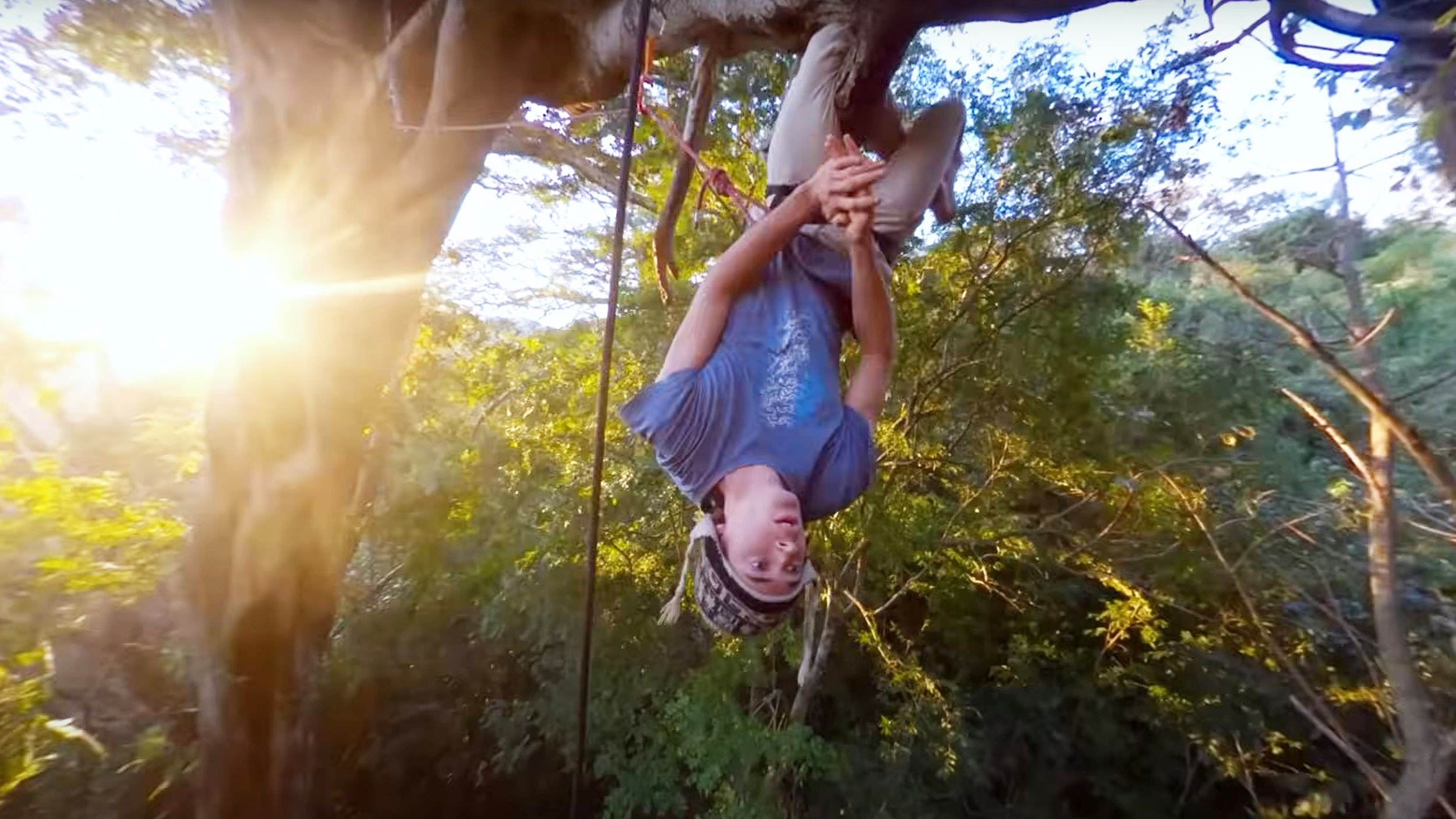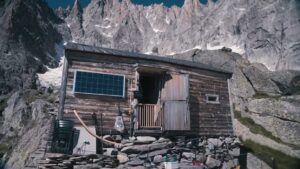In Costa Rica, unique trees grow in a special, mist-shrouded woodland. The cloud forest is called Monteverde. The trees are strangler figs — unusual giants that erupt above the surrounding canopy like lighthouses on a rocky coast. And into these hulking trees clambers a small but dedicated community of tree climbers interested in experiencing a different, perhaps softer, side of the vertical life.
This community — and, to a certain extent, the trees they climb — is the subject of the documentary Climbing Giants. The brainchild of climber and adventure storyteller Noah Kane, the film delves into the motivations and passions of this multi-generational community.
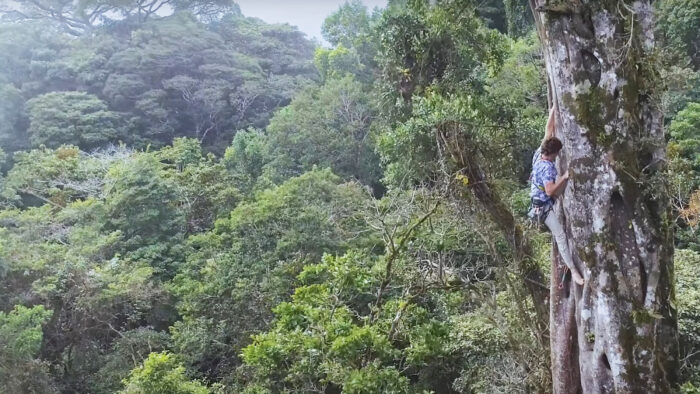
Photo: Screenshot
“Trees link the earth and sky. They are these mundane connectors between where we walk every day and the sky, which has this sense of the celestial, of something that’s bigger than ourselves,” Nalini Nadkarni, a scientist who specializes in studying tree canopy ecosystems in Monteverde, observes early in the film.
Nadkarni was the first person to take up tree climbing seriously in Monteverde. At first, it was a means to an end, a way to study the plants that reach into the cloud forest canopies.
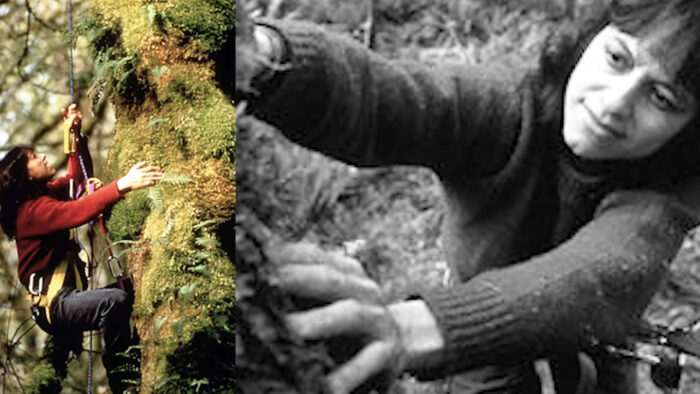
Nalini Nadkarni, the godmother of strangler fig climbing in Monteverde. Photo: Screenshot
‘Tarzan and Jane stuff’
“Scientists, when I first started tree climbing, felt that it was just a stupid thing to do. I remember my graduate committee saying, ‘Oh, that’s just Tarzan and Jane stuff, Nalini. That’s just a gimmick. Why don’t you just stick to what everybody else is doing on the forest floor and forget the canopy?'”
But Nadkarni stuck to her guns, and eventually, the activity became a passion and a hobby. Helping her along on these arboreal missions was a peculiar tree that gives Monteverde its unique character.
“Tropical cloud forests really have some of the most diverse and abundant plants that grow up in the treetops,” Nadkarni observes. “And one of the most important and interesting is the strangler fig.”
Strangler fig strategy
When a bird or monkey eats a strangler fig fruit and then defecates the seeds, sometimes those seeds stick to the branch of another tree. This is actually what the strangler fig wants. The seed sprouts roots that grow downward, spiraling around the host tree until they hit the ground.
Now with a regular source of water, the strangler fig begins to grow quickly, until its “roots” become a tangled, dense, almost sculptural mass that surrounds the trunk of the host tree. And that special shape is attractive to a certain type of adventure seeker.
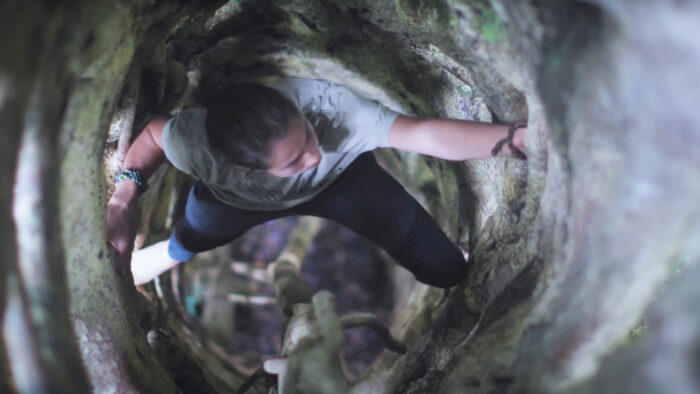
Photo: Screenshot
“The special thing about the strangler fig trees is that as they grow they form this ladder of tangled up shapes that we can use to [climb],” says Izzy More, a young Costa Rican following in Nadkarni’s footsteps — if for more aesthetic reasons.
“Our goal is to…do a clean ascent of the tree. Hopefully, without falling,” he continues.
Like so many other climbers, More views the pastime as a way to prove something to himself and experience life outside the boundaries of terrestrial existence. The same goes for the rest of the young men and women scaling Monteverde’s tangled giants.

Finding peace. Photo: Screenshot
Barefoot climbing
But if the documentary makes one thing clear through its smooth, assured visuals and attentive use of sound design, it’s that climbing trees is different from climbing rock or ice on a fundamental level.
Almost none of the climbers wear shoes, and the gentle sound of wind and mist filtering through the canopy leaves is ever-present. Monkeys howl, birds sing, and endless insects hum and whine.

Photo: Screenshot
To ascend a strangler fig, Climbing Giants makes clear, is to make an intimate vertical connection. At just under 49 minutes, the film is an excellent way to start your weekend.
